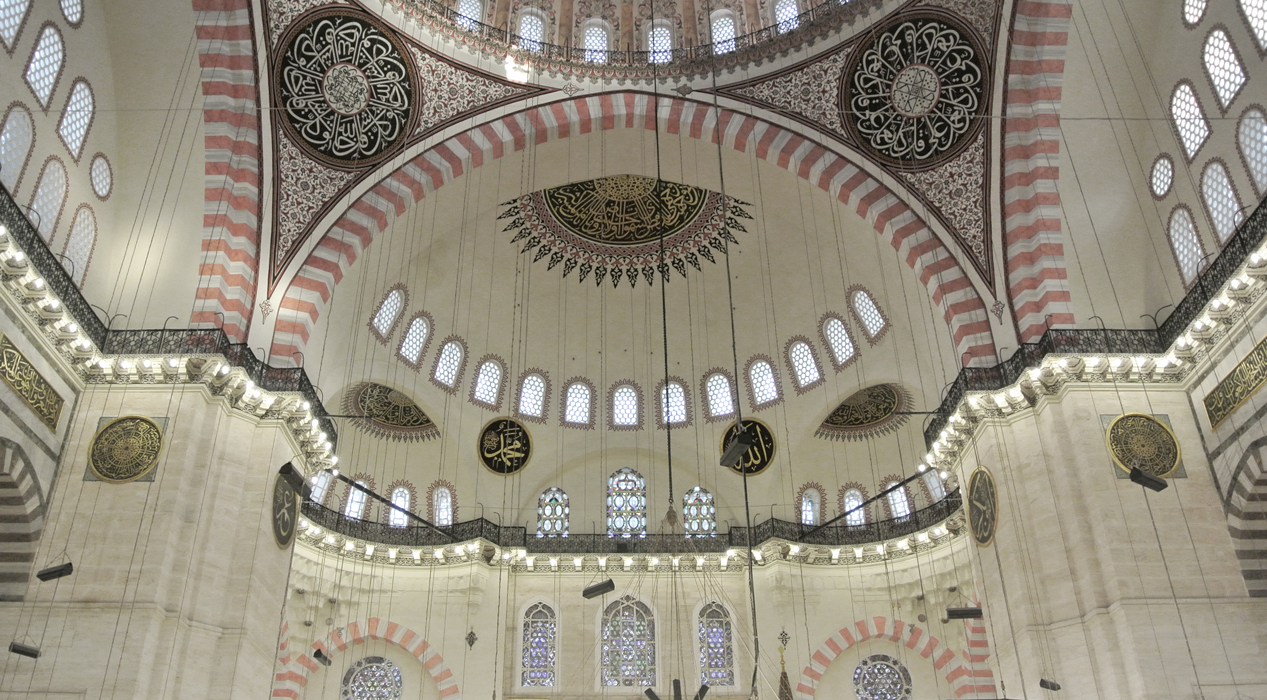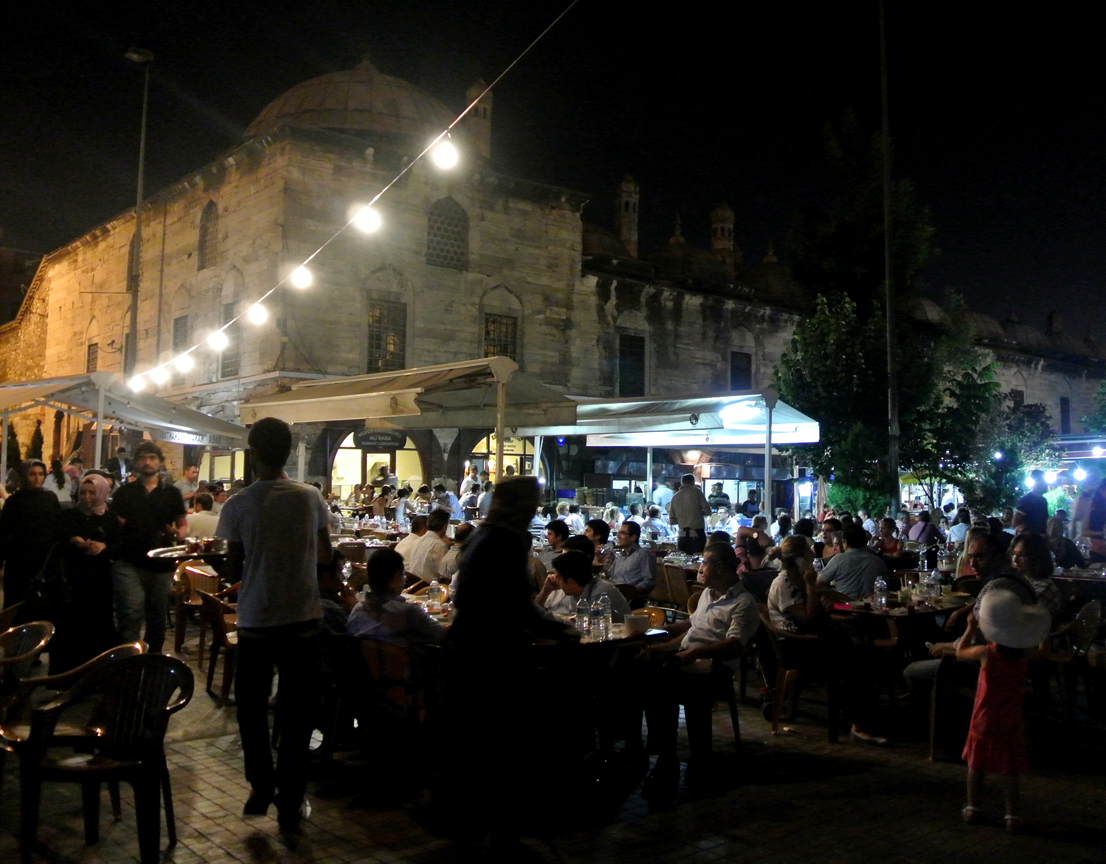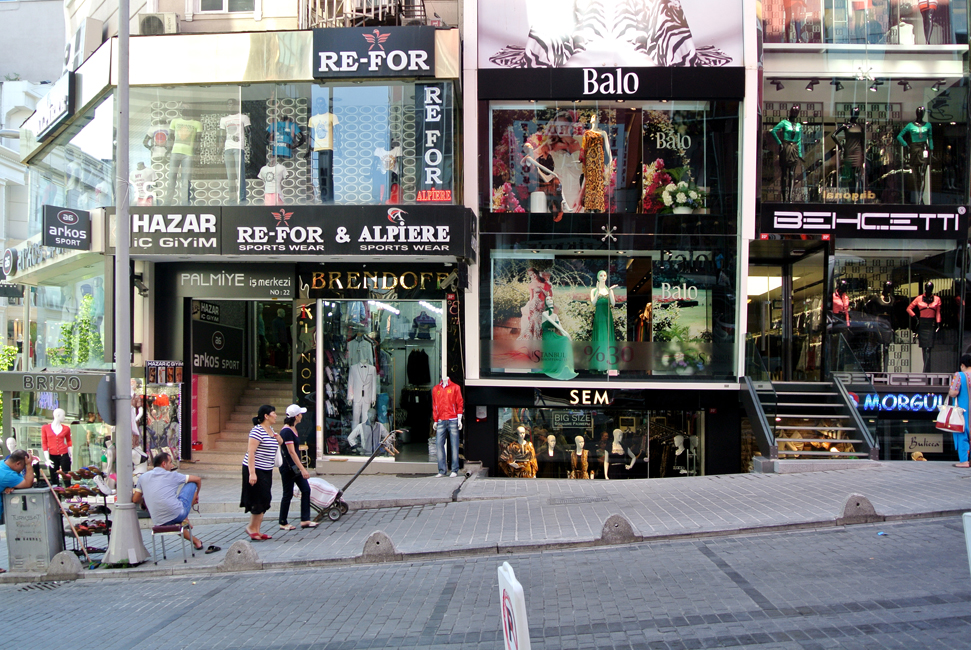Not only urbanistically mosques act as focal points within the city, but their intricate interiors are separate worlds on their own. They are true urban enclaves with their own atmosphere (I cannot stop thinking about Hagia Sophia's mystical light filtering through the windows), their own unique colors and ornamentation (the harmonious dialogue of the blues, reds, and gold in the Blue mosque was stunning) and many times their own courtyards and other structures serving other needs, such as schools and hospitals (Süleymaniye Mosque, for example).
Blue Mosque (1609-1616):
























